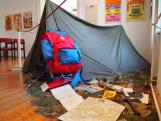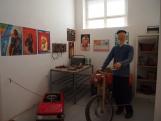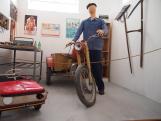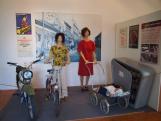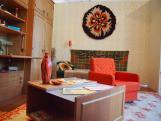|
|
Address: 8360, Keszthely Múzeum u. 2.
Phone number: (83) 312-351, (83) 511-335
E-mail: titkarsag@balatonimuzeum.hu
Opening hours: 01.09-31.10.: Tue-Sat 10-17, 01.11-30.: Tue-Sat 10-16
|
|
Ticket for adults
|
800 HUF
|
/ capita
|
|
Group ticket for adults
(min. 8 people)
|
600 HUF
|
/ capita
|
|
Ticket for students
|
400 HUF
|
/ capita
|
|
Ticket for pensioners
|
400 HUF
|
/ capita
|
|
Ticket for families
(2 adults + min. 2 children)
|
400 HUF
|
/ capita
|
|
Combined ticket
(I PROGRAMME PACKAGE: ticket + guided tour at the permanent exhibition + museum pedagogy activity for student card holders over 10 people )
|
750 HUF
|
|
|
Combined ticket
(II PROGRAMME PACKAGE: ticket + guided tour at the permanent exhibition + museum pedagogy activity + arts and crafts activity over 10 people )
|
1450 HUF
|
|
|
Guide
(on prior notice)
|
4500 HUF
|
The new segment of our series about the decades of Socialism is the exhibition Forward on the Road of Socialism... - So we Lived in the SeventiesThe exhibition invites the visitors to the soft heydays of the dictatorship in the 1970s marked with the name of János Kádár. It was the decade in which the power offered the adoption of financial gain for the people so that they accept the bases of the system.
Our exhibition - in accordance with our former practice - recalls the era mainly through interiors and exteriors, scenes of daily life that "tell us" about the distinctive characteristics of those decades' social contexts and habits.
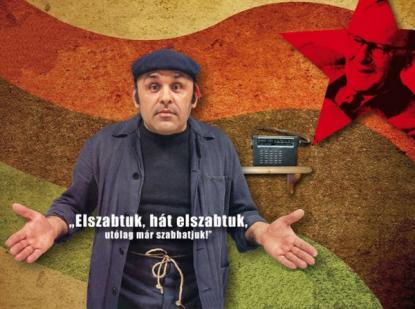 The most important item in our garages set up for moonlighting during those days was a 'csettegő' which was created chiefly due to our need to transport animals bred in household farms.
The most important item in our garages set up for moonlighting during those days was a 'csettegő' which was created chiefly due to our need to transport animals bred in household farms.
We recall the programmes of Maydays parades with grandstands guarded by labourer guards, young guardians. We also shoe a couple marching carrying a flag.
The workplace we chose to symbolise 'total employment' is an office where we show one of the first computers in Zalaegerszeg, the Practicomp 4000 which was a data preparation system using a hole in the tape, which was then used to perform administrative tasks.
One of the places people could go out was the 'presso'. The one we show has a fashionable girl sitting in a leather chair wearing a colourful bananas laced skirt and polished boots.
The cube house is represented by a room furnished with a cabinet Freddy III from the Zala Furniture Factory with with branded alcohol bottles arranged on top in a row, with typical handiwork hung on the walls and a TV set that most households had by those days.
Demographic problems showing first in the decade are illustrated by the interior of a nursery with by now outdated furnishings and poor, seemingly colourless games.
In the street, we show a popular Babetta motorcycle and a Csepel bicycle. The mother pushing a stroller is wearing the iconic piece of clothing of the decade, the jersey dress.
Children, young people spent their summer holidays in youth and pioneer camps The camps' specific equipment was the iron bunk bed which can also be seen in the exhibition, as well as many objects, which were essential to some good camping, from the bathing dress the hot pants, the Mézga logic game to badminton, beaded purse and the BRG cassette recorder.
In addition to the items object assemblages presented in the exhibition we show films, play rock and roll or beat-songs to complement the information we provide on the era.
Katalin Béres

